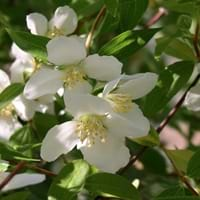Life Span
Perennial
Perennial
Type
Bulb or Corm or Tuber
Shrub
Origin
South America
Mexico
Types
Pamianthe cardenasii , Pamianthe parviflora , Pamianthe peruviana
Not Available
Habitat
All sorts of environments
Wide range of ecological site
USDA Hardiness Zone
8-10
8-11
Sunset Zone
21,22
6, 7, 8, 9, 14, 15, 16, 17, 18, 19, 20, 21, 22, 23, 24
Habit
Clump-Forming
Oval or Rounded
Flower Color Modifier
Bicolor
Not Available
Fruit Color
Green
Red, Orange
Leaf Color in Spring
Dark Green
Green, Light Green
Leaf Color in Summer
Light Green
Green
Leaf Color in Fall
Several shades of Green
Dark Green
Leaf Color in Winter
Light Green
Dark Green
Leaf Shape
Strap shaped
Ovate
Plant Season
Spring, Summer, Fall
Spring, Summer, Fall, Winter
Sunlight
Partial Sun, Partial shade
Full Sun, Partial Sun
Type of Soil
Loam, Sand
Loam, Sand
The pH of Soil
Acidic, Neutral, Alkaline
Acidic, Neutral
Soil Drainage
Average
Well drained
Bloom Time
Spring, Late Spring, Early Summer, Summer, Late Summer
Early Spring, Spring, Late Spring, Late Summer, Early Fall, Late Winter
Tolerances
Drought
Drought
Where to Plant?
Ground, Pot
Container, Ground, Pot
How to Plant?
Offsets
Seedlings, Transplanting
Plant Maintenance
Medium
Medium
Watering Requirements
Keep the ground moist but not water-logged
Prefer drip-irrigation instead of Over-head watering
In Summer
Lots of watering
Lots of watering
In Spring
Moderate
Moderate
In Winter
Average Water
Average Water
Soil pH
Acidic, Neutral, Alkaline
Acidic, Neutral
Soil Type
Loam, Sand
Loam, Sand
Soil Drainage Capacity
Average
Well drained
Sun Exposure
Partial Sun, Partial shade
Full Sun, Partial Sun
Pruning
Pinch or prune as they grow to promote branching and bushiness, Remove damaged leaves, Remove dead branches, Remove dead leaves, Requires little pruning
Prune if you want to improve plant shape
Fertilizers
All-Purpose Liquid Fertilizer, High phosphorus
14-14-14 Fertilizer, Fertilize in late fall, fertilize in spring, Requires high amount of nitrogen
Pests and Diseases
Leaf spot, Mosaic viruses
Bacteria wilt, Red blotch
Plant Tolerance
Drought
Drought, Heat Tolerance
Flower Petal Number
Single
Single
Fragrant Bark/Stem
No
Yes
Foliage Texture
Coarse
Medium
Foliage Sheen
Glossy
Glossy
Attracts
Bees, Birds, Bumblebees, Butterflies, Hummingbirds, pollinators
Hummingbirds
Allergy
Unknown
allergic conjunctivitis, Chest tightness, Diarrhea, Dizziness, Nausea, Vomiting
Aesthetic Uses
Beautification, Bouquets, Ornamental use, Showy Purposes
Showy Purposes
Beauty Benefits
No Beauty Benefits
Brightens the skin complexion, Glowing Skin, Treatment of Dark Spots
Environmental Uses
Air purification
Air purification
Medicinal Uses
No Medicinal Use
Alzheimer’s Disease, Anxiety, Cancer, Diarrhea, Digestion problems, Liver problems, Menstrual Cramps, Respiratory Disorders, Weight loss
Part of Plant Used
Not Available
Whole plant
Other Uses
Beneficial species for attracting pollinators, Decoration Purposes
Used as Ornamental plant, Used for its medicinal properties
Used As Indoor Plant
No
Yes
Used As Outdoor Plant
Yes
Yes
Garden Design
Bog Garden, Container, Feature Plant, Foundation, Mixed Border, Water Gardens
Container, Feature Plant, Foundation, Mixed Border, Rock Garden, Tropical, Wall
Botanical Name
HYMENOCALLIS longipetala
CHOISYA ternata
Common Name
Peruvian Daffodil, Spiderlily
Mexican Orange, Mock Orange
In Hindi
peruvian daffodil
Philadelphus
In German
peruvian daffodil
Pfeifensträucher
In French
peruvian daffodil
Philadelphus
In Spanish
Pamianthe
Philadelphus
In Greek
peruvian daffodil
Philadelphus
In Portuguese
peruvian daffodil
Philadelphus
In Polish
peruvian daffodil
Jaśminowiec
In Latin
peruvian daffodil
Philadelphus
Phylum
Magnoliophyta
Magnoliophyta
Class
Liliopsida
Magnoliopsida
Order
Asparagales
Cornales
Family
Amaryllidaceae
Rutaceae
Genus
Pamianthe
Philadlephus
Clade
Angiosperms, Monocots
Angiosperms, Asterids, Eudicots
Tribe
Clinantheae
Philadelpheae
Subfamily
Amaryllidoideae
Hydrangeoideae
Number of Species
Not Available
Season and Care of Peruvian Daffodil and Mock Orange
Season and care of Peruvian Daffodil and Mock Orange is important to know. While considering everything about Peruvian Daffodil and Mock Orange Care, growing season is an essential factor. Peruvian Daffodil season is Spring, Summer and Fall and Mock Orange season is Spring, Summer and Fall. The type of soil for Peruvian Daffodil is Loam, Sand and for Mock Orange is Loam, Sand while the PH of soil for Peruvian Daffodil is Acidic, Neutral, Alkaline and for Mock Orange is Acidic, Neutral.
Peruvian Daffodil and Mock Orange Physical Information
Peruvian Daffodil and Mock Orange physical information is very important for comparison. Peruvian Daffodil height is 61.00 cm and width 61.00 cm whereas Mock Orange height is 150.00 cm and width 180.00 cm. The color specification of Peruvian Daffodil and Mock Orange are as follows:
Peruvian Daffodil flower color: White
Peruvian Daffodil leaf color: Dark Green
Mock Orange flower color: White
- Mock Orange leaf color: Green and Light Green
Care of Peruvian Daffodil and Mock Orange
Care of Peruvian Daffodil and Mock Orange include pruning, fertilizers, watering etc. Peruvian Daffodil pruning is done Pinch or prune as they grow to promote branching and bushiness, Remove damaged leaves, Remove dead branches, Remove dead leaves and Requires little pruning and Mock Orange pruning is done Prune if you want to improve plant shape. In summer Peruvian Daffodil needs Lots of watering and in winter, it needs Average Water. Whereas, in summer Mock Orange needs Lots of watering and in winter, it needs Average Water.





